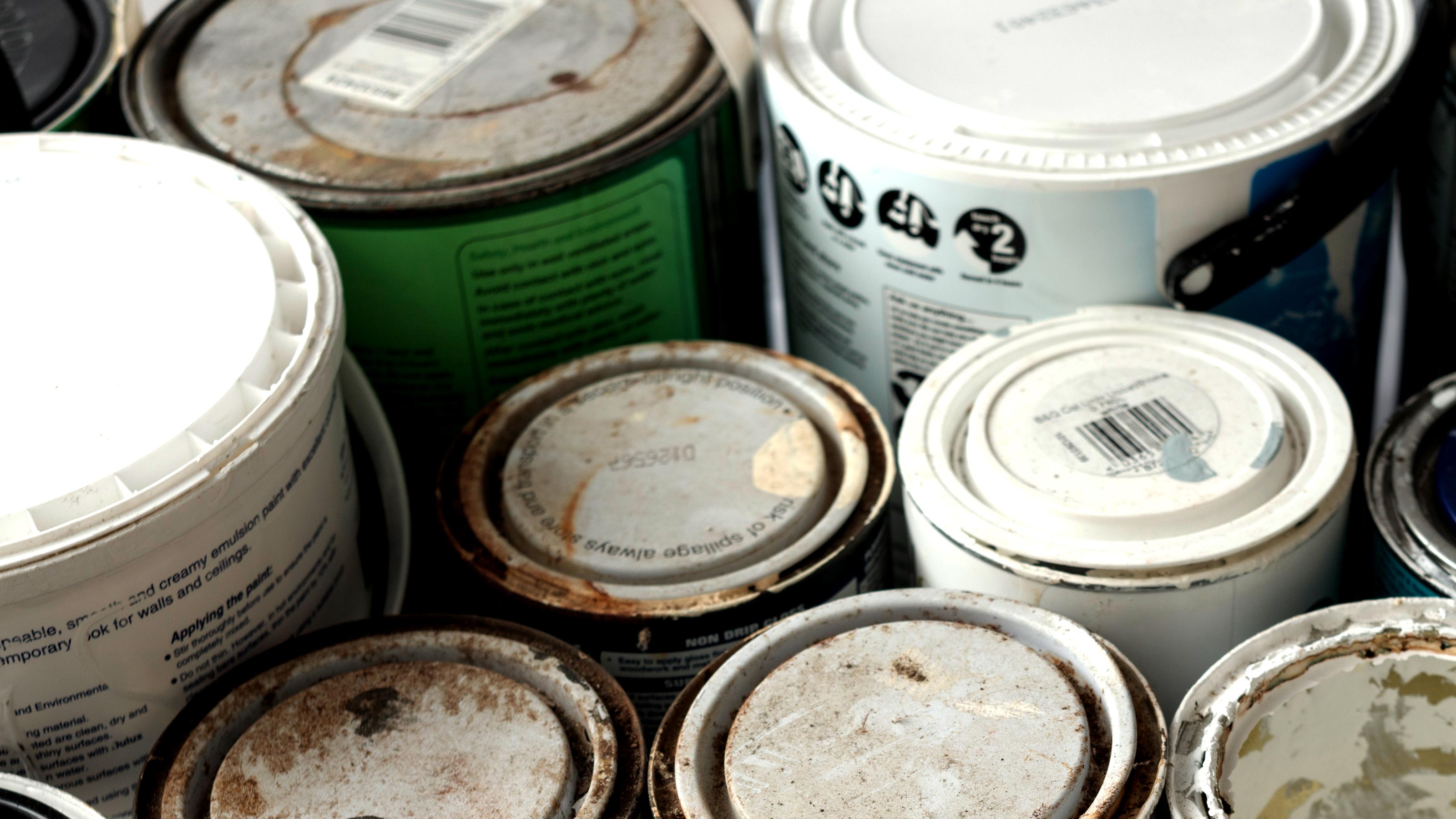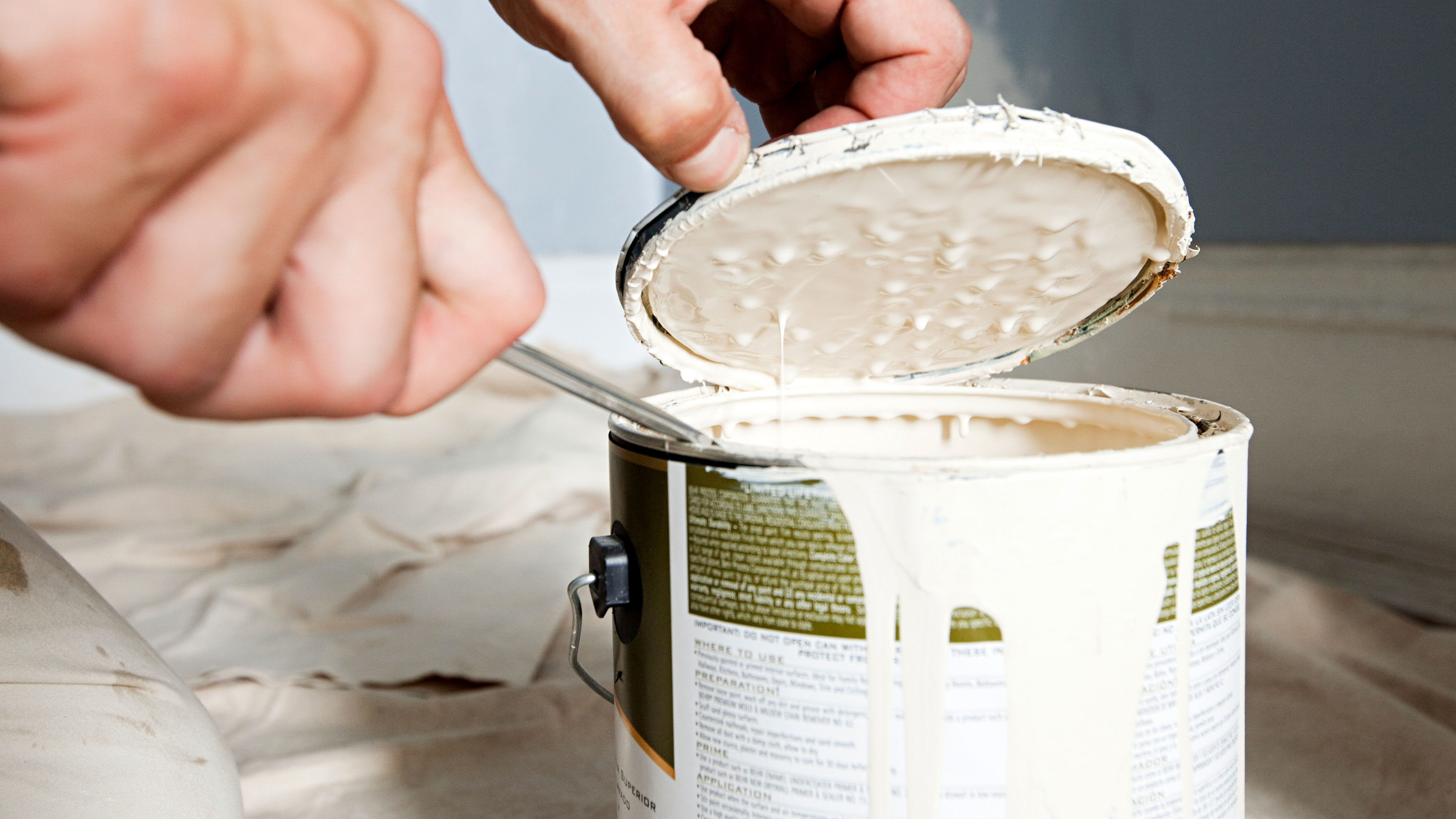Does emulsion paint go off? We answer five common queries
If you have left over emulsion ask yourself: Does emulsion paint go off? Here we give you the lowdown on how long emulsion lasts and how best to store it

You’ve found some old emulsion in the shed and wonder: Does emulsion paint go off? The simple answer is yes. The longer you keep emulsion paint the more likely it will go off and become unusable. You need to store it properly and use it within a sensible time frame to make sure it doesn't go off.
If you are painting a wall you don’t want to be using emulsion that has been compromised as you won’t get the crisp clean finish you were hoping for. Here we help you identify emulsion paint that has gone off and tell you how to dispose of it properly.
Does emulsion paint go off and how long does it last?
Paint going off has become more of a problem in recent years as Matthew Brown, Sadolin & Sandtex Technical Consultant explains, "It is more common in water-based paints," Brown continues, "Following the change to certain ingredients within paint that have been identified to harm the environment. These harmful products often helped prolong the shelf life.”
However, emulsion paint still has a reasonably long shelf life before it is opened. But, where you store the paint will make a difference.
If stored in the right conditions most emulsion paint should easily last five years if left unopened. Ideally, it is best practice to only purchase paint when you have a job to do to make sure it is usable when finally opened.
Once you have opened emulsion paint, its shelf life can be shortened dramatically. But again, how you store the paint after opening will make a difference in terms of how long it lasts before you need to dispose of it. If looked after properly, opened paint should last for at least a year.
It may seem trivial but knowing how to open a paint can properly — and close — will also have a bearing on the life of your emulsion. A poorly opened tin can compromise the lip of the lid, which can let in air when closed. This will shorten the lifespan of the paint.

What’s the best way to store paint?
Sticking paint in your shed or outdoor storage is not an uncommon occurrence, but it’s one of the worst places to store paint. The ever changing temperatures will cause the paint to expand and contract, which will sour the paint and cause it to go off a lot quicker than if stored properly.
Manufacturers typically recommend that the best wall paint is stored between 10-30 degrees. Matthew Brown, Sadolin & Sandtex Technical Consultant reinforces this point. "The best way to store any decorative paint is the same for new or part used. To store the paint make sure the tin is sealed, placed upright & kept in a cool dry conditions." An understairs cupboard or similar is a good choice.
Brown goes on to say. "Prolonged storage is usually when paint has been used, and then the job or project is complete, in that case make sure you secure the lid and give it a little shake to help the paint seal the lid. This will help provide an air tight seal in which the paint should last for in-excess of 6 months or even longer."
How can you tell if emulsion paint has gone off?
If you have left your opened emulsion in your shed for the last two years or unopened emulsion for over five years, you should seriously think about buying new emulsion to make sure that you are going to get a good finish when painting a room.
One option is to ask yourself How much paint do I need before you start your latest paint project. This will help ensure that you won’t have too much leftover paint.
However, before you dispose of your old paint, open the container and give it a sniff. If it doesn’t smell like fresh paint and has a sort of sour smell then it's on its way out. If this is the case, get rid of it.
Water will pool at the top as the paint settles. This doesn’t necessarily mean that it has gone off. Get a stick or mixing tool that fits onto a drill and give the paint a good mixing. If the paint mixes back to normal, still smells OK and isn’t discoloured then try using the paint on a small out of the way patch to test.
What happens if I use paint that has gone off?
The simple solution here is not to use off paint. If you are painting a ceiling or wall with off paint, you will encounter a few problems. It won't adhere as well to the surface and will most likely come up patchy when dry.
Also off paint can have a sour odour which you might not notice until you have finished painting. If you do use gone off paint you will need to strip off the walls and ceilings where you used the paint and start again.
How should I dispose of old or off paint?
If you have a significant amount of paint left in a container i.e. around half a tin or more, do not place in your household bin or pour down the sink or drain. This will contaminate the water supply.
Your local waste recycling centre will take old tins of paint, but you will need to check before you go to see how much they accept. If you have more than they accept, you will have to make multiple journeys to get rid of it. You can use Paintcare’s Recycle The Rest site to find the nearest recycling centre.
Alternatively you can get rid of wet paint by leaving on newspaper or cardboard and leaving it to dry. Then you can place it in your household waste. Another alternative is to look at buying eco paints as they are better for the environment when disposing of them.
Get the Homebuilding & Renovating Newsletter
Bring your dream home to life with expert advice, how to guides and design inspiration. Sign up for our newsletter and get two free tickets to a Homebuilding & Renovating Show near you.
Steve Jenkins is a freelance content creator with over two decades of experience working in digital and print and was previously the DIY content editor for Homebuilding & Renovating.
He is a keen DIYer with over 20 years of experience in transforming and renovating the many homes he has lived in. He specialises in painting and decorating, but has a wide range of skills gleaned from working in the building trade for around 10 years and spending time at night school learning how to plaster and plumb.
He has fitted kitchens, tiled bathrooms and kitchens, laid many floors, built partition walls, plastered walls, plumbed in bathrooms, worked on loft conversions and much more. And when he's not sure how to tackle a DIY project he has a wide network of friends – including plumbers, gas engineers, tilers, carpenters, painters and decorators, electricians and builders – in the trade to call upon.

